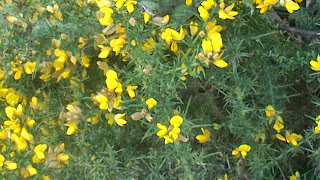I always seem to end up with partial balls of yarn. I've been given bags filled with them by people who see them as rubbish.
Granny squares are easy and a good way to use up left-over bits and pieces.
The simple and plain snowflake pattern squares are probably the most common, as well as being a good starting place for making squares.
A guide to the abbreviations I use (US abbreviations and stitch names) can be found
here.
Snowflake Granny Squares:
 |
| Snowflake Granny Square in one colour |
1st Round: ch 6, slst into 1st ch to form foundation ring.
2nd Round: 3ch (to form first tr of pattern) 2tr, 2ch, 3tr, 2ch, 3tr, 2ch, 3tr, 2ch, slst into first st, then sl st to 2ch gap.
3rd Round: 3ch (to form first tr of pattern) 2tr, 2ch, 3tr, 1ch, 3tr, 2ch, 3tr, 1ch, 3tr, 2ch, 3tr, 1ch, 3tr, 2ch, 1ch, slst into first st, then sl st to 2ch gap.
4th Round: 3ch (to form first tr of pattern) 2tr, 2ch, 3tr, 1ch, 3tr, 1ch, 3tr, 2ch, 3tr, 1ch, 3tr, 1ch, 3tr, 2ch, 3tr, 1ch, 3tr, 1ch, 3tr, 2ch, 3tr, 1ch, 3tr, 1ch, slst into first st, then sl st to 2ch gap.
5th Round: 3ch (to form first tr of pattern) 2tr, 2ch, 3tr, 1ch, 3tr, 1ch, 3tr, 1ch, 3tr, 2ch, 3tr, 1ch, 3tr, 1ch, 3tr, 1ch, 3tr, 2ch, 3tr, 1ch, 3tr, 1ch, 3tr, 1ch, 3tr, 2ch, 3tr, 1ch, 3tr, 1ch, 3tr, 1ch, slst into first st.
 |
| Lots of small Granny Squares made into a blanket. |
Most of mine will stop at four rounds if I'm making basic squares, or you can continue in this manner until you reach the size you want.
I have made entire blankets as one 'square' that I've just continued until it was bed sized.
You can change colours for each round if you like. In that case, after the slip stitch to complete the round, fasten off that colour and start your new colour in the corner 2 chain gap.
 |
| Blanket made from Granny Squares including big squares. |
|
In one of the boxes of Grandma's stuff that Mum recently gave me there is a huge amount of old magazines and pattern books, several of them contain different types of Granny Squares, as well as different uses for them.
There are cushions, made the obvious way, but also so that the joined squares make an X in the middle of both sides of the cushion. Baby blocks made from six squares joined in a cube and stuffed. There are Granny Squares made out of heavy yarn and turned into coffee mug coasters, hot pot stands and pot mitts.
In a Woman's Day Super Special from 1983 - titled Granny Squares & Needlework there are several patterns to make jerseys and cardigans from Granny Squares - one is made up of several Granny Squares of varying sizes joined for the body of the garment. Another is one large Granny Square as the front and another for the back. The sleeves are ordinary crochet.
 |
| See the pretty (??) jersey made from Granny Squares on the cover |
There are other styles of Granny Square and other shapes - round ones and hexagonal ones. Some have flowers, some are still square, but are done as corner patterns.
And then there are the wealth of books filled with many different types of Granny Squares. See below for a selection - there were nearly 900 returns on a search on Granny Squares.
UPDATE:
One of the things that I've always struggled with somewhat is joining the Granny Squares. Today I found a fantastic website that has links to 10 different tutorials each showing different ways to join the squares - most are fairly invisible.
That link?
Knot Your Nana's Crochet
 I've said before that we seem to be farming gorse and I'm always looking for a way to do something useful with it - why waste a resource?
I've said before that we seem to be farming gorse and I'm always looking for a way to do something useful with it - why waste a resource?





































